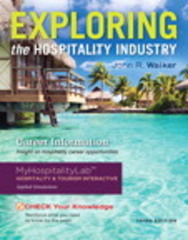Question
PLEASE HELP Using the South University Online Library or the Internet, conduct research to gain a greater understanding of Fiedler's Contingency Theory. John, a health
PLEASE HELP
Using the South University Online Library or the Internet, conduct research to gain a greater understanding of Fiedler's Contingency Theory.
John, a health management student completing an internship at Memorial Hospital, has been appointed chair of a multidisciplinary clinical taskforce by the hospital's CEO. The taskforce will design a new operational system to reduce the waiting time of patients entering the hospital's emergency room (ER). Although John had no clinical experience, he had successfully completed a course in operations management prior to beginning his internship and was excited to apply his new knowledge for solving a "real" problem for the hospital. The hospital CEO told John that when a patient entered the hospital's ER, it could take up to eight hours from the time the patient was initially triaged by a nurse to the time the patient was either discharged home or admitted as an inpatient by the physician. The CEO said, "Due to quality of patient care issues, this timeframe is unacceptable and the taskforce needs to come up with solutions to this problem. My goal is to reduce the "turnaround" time for the patient from eight hours to two hours." Prior to being assigned as the chair of this taskforce, John had informally observed the operations of the hospital's ER and noted that many of the bottlenecks causing patient care delays were caused by operational issues such as nurses filling out duplicate forms and a lack of communication between the hospital departments (for example, radiology) when the ER physicians ordered tests or were waiting for test results to confirm their diagnoses. These bottlenecks caused a slow turnover of the ER's examination rooms and unnecessary paperwork resulting in the ineffective use of both the physicians' and nurses' time. In addition to John, the CEO assigned Dr. Smith, the medical director of the hospital's ER, and Mary, the ER nurse manager, to the taskforce. As chair of the taskforce, John scheduled an initial meeting for 10:00 a.m., the following Monday. John was surprised that both Dr. Smith and Mary arrived twenty minutes late to the meeting saying that this was "taking valuable time away from their normal assignments." John started the meeting by first introducing himself. Before this meeting, he had no interactions with Dr. Smith and Mary. He then reviewed the current statistics of the average wait time for a patient presenting to the ER and the hospital's CEO desire to reduce this time. He then opened the meeting for comments and suggestions. Dr. Smith spoke first, "In my opinion, the current operational systems that we have in place are just fine. We just need more ER physicians and examination rooms so that more patients can be seen." Dr. Smith told John to recommend that the operational systems were good enough and that the hospital should build a new wing for additional ER exam rooms and hire more physicians. Interrupting Dr. Smith, John said, "The hospital has a very limited capital budget and no funds have been allocated for building more facilities. We need to redesign the operational system to be more efficient and effective." Dr. Smith gave John a stern look and reminded him that he, not John, was the medical director and therefore, knew what is needed and what is best for the hospital's ER. Mary was the next to speak. She recommended that more nurses be hired so patients could be triaged quicker when they first present themselves in the ER. Dr. Smith disagreed, saying, "Hiring more nurses is not the solution because even if patients were triaged quicker, there aren't enough examination rooms to move the patients to!"
John was just about to remind them of the taskforce's purpose, when an overhead page indicated that both Dr. Smith and Mary were needed in the ER immediately. By now, patients were lined up in the hallways waiting to be seen in the ER. Dr. Smith told John to make the hiring and building recommendations to the CEO. The meeting adjourned, with Dr. Smith and Mary running off to the ER where patients were waiting to be seen. John sat in the empty meeting room and thought, "The CEO is not going to be happy with the taskforce's recommendations." He wondered, "As chair of this taskforce, what could I have done to produce the desired outcome?" John knew that hiring more physicians and nurses and building more examination rooms was not the answer. The answer was better coordination and integration of the ER's operating systems.
- What is Fiedler's Contingency Theory? How did it develop? What are its applications? What are its pros and cons?
- Does everyone have just one leadership style or can it vary? Why? What factors exert pressure to influence a shift in leadership style? Are the factors exerting pressure to influence a shift in leadership style appropriate with respect to merit and measure? Why or why not?
- What factors influence a leader to adopt a specific style (personal traits, characteristics, environment, and so on)?
- What role do communications, dynamic listening, and conflict resolution play for a leader?
- Using Fiedler's Contingency Theory, how would you help John determine what leadership style he should use? Why?
- What would be the most effective leadership style in the above case scenario using Fiedler's Contingency Theory? Why?
Step by Step Solution
There are 3 Steps involved in it
Step: 1

Get Instant Access to Expert-Tailored Solutions
See step-by-step solutions with expert insights and AI powered tools for academic success
Step: 2

Step: 3

Ace Your Homework with AI
Get the answers you need in no time with our AI-driven, step-by-step assistance
Get Started


